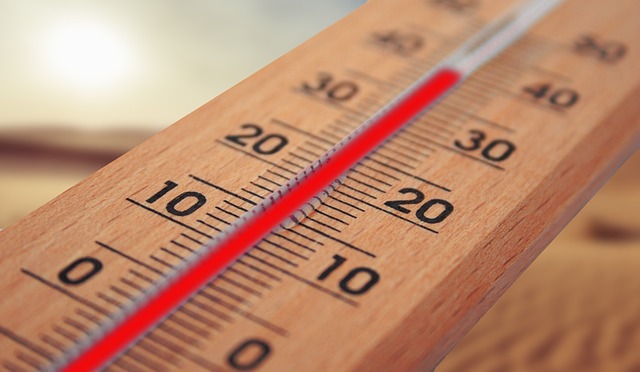
India in 2025: How El Niño Will Shape Our Weather and What You Need to Know
As we step into 2025, it’s clear that India’s climate is experiencing the unprecedented impact of El Niño, the global weather phenomenon that has already been making waves in 2024. From prolonged heatwaves to delayed winters and erratic rainfall, the effects are undeniable. This year, we are likely to witness the continuation of this climate disruption, with far-reaching consequences for everything from agriculture to public health.
In this post, we’ll dive deep into the unusual weather patterns that have unfolded over the last few months and explain how El Niño is behind it all. We’ll also explore what you can expect in 2025 and how India can prepare for the challenging months ahead.
A Summer That Refused to End: The Heatwave of October 2024
When October rolled around in 2024, India was supposed to be welcoming the cool relief of autumn after a long and grueling summer. Instead, the country was hit by an unprecedented heatwave, which extended well beyond the usual summer months. In fact, October 2024 was recorded as the warmest October in India in 123 years, a clear sign that something was off.
Cities like Delhi, Jaipur, and Ahmedabad saw temperatures consistently hovering above 35°C. And, in Raipur, temperatures even reached a blistering 35.6°C, making it one of the hottest places in the country. The usual cooling winds failed to arrive, and people across India were left sweltering under the unexpected heat. This was just one glimpse of how El Niño was already starting to influence the climate in India—especially in regions that normally experience moderate temperatures during this time of the year.
How El Niño Is Shaping the 2025 Climate in India
El Niño refers to the warming of ocean waters in the equatorial Pacific, which significantly affects weather patterns across the globe, including India. The disruption of normal atmospheric circulation results in unpredictable rainfall, intensified heatwaves, and changes in the monsoon cycle. Here’s how El Niño is shaping the weather for India in 2025:
1. Prolonged Heatwaves and Late Winters
As we head into 2025, the impact of El Niño is expected to become even more pronounced. India is likely to experience another round of intense heatwaves with higher-than-usual temperatures. Regions in North India—such as Delhi, Rajasthan, and Uttar Pradesh—are predicted to see summer temperatures consistently above 45°C. The heat will extend well into the beginning of the year, delaying the usual winter cool-down that India depends on.
For cities that rely on cool weather to get relief from the scorching summer, like Chandigarh and Lucknow, 2025 could feel like a prolonged and relentless battle against heat. These extreme temperatures can disrupt daily life, especially for workers, students, and outdoor laborers.
2. Erratic Monsoon and Below-Average Rainfall
In 2024, the monsoon was already showing signs of unpredictable behavior. While Kerala and Tamil Nadu saw heavy rains, areas like Maharashtra and Punjab were severely dry, causing crop failures and water shortages. The primary cause? El Niño disrupting the monsoon winds that are crucial for bringing rains to India during the monsoon season.
In 2025, India will likely see below-normal rainfall during the monsoon months, especially in Central India, North India, and the West Coast. Farmers in these regions could face another year of drought, resulting in crop losses and water scarcity. Maharashtra, Punjab, and Haryana could experience severe drought-like conditions as rainfall remains scarce. This could trigger widespread water shortages, further complicating the water crisis in many rural areas.
What Does This Mean for Agriculture, Water, and Public Health?
The effects of El Niño are not limited to the weather alone. They extend to agriculture, water resources, and public health. Here’s how the disruptions of 2025 could impact these crucial aspects:
Agriculture at Risk: Crop Failures and Rising Food Prices
The intense heatwaves and unpredictable rainfall will take a severe toll on agriculture in India. In regions where crops are rainfed, like Central India and Uttar Pradesh, crop failures are likely. Rice, wheat, and soybeans—key crops for India—could see significantly reduced yields due to the harsh conditions.
In addition to this, delayed rainfall will push sowing and harvest seasons, causing further disruption. This could lead to a rise in food prices, particularly for vegetables, grains, and fruits. In the coming year, food security will be a major concern, as the agriculture sector struggles to cope with these extreme weather events.
Water Crisis: Worsening Shortages
The unusual heat and reduced rainfall will also deepen the water crisis that India is already facing. Many regions that rely on groundwater for irrigation and drinking water are already running dry. As El Niño worsens, water reservoirs will deplete further, and water stress will spread across the country. Urban centers like Chennai, Bengaluru, and Mumbai might experience more water cuts and restrictions.
Health Risks: Heat-Related Illnesses on the Rise
Extreme heat can directly affect the public health of India, with heatstroke and dehydration becoming more common during prolonged periods of high temperatures. In 2025, the situation could worsen, particularly in North India, where temperatures can cross the 45°C mark.
Additionally, as vector-borne diseases thrive in warmer climates, India may see an uptick in diseases like dengue, malaria, and chikungunya, especially in the monsoon season. The spread of these diseases will put further strain on India’s healthcare system, which is already facing significant challenges.
How India Can Prepare for 2025: Adaptation Is Key
As El Niño continues to disrupt the country’s climate in 2025, India must focus on adaptation to these extreme weather patterns. Efforts should be directed towards water conservation, efficient agricultural practices, and climate-resilient infrastructure to minimize the damage caused by these unpredictable weather patterns.
Key Measures for Preparedness:
- Improved Irrigation Systems: Investing in drip irrigation and water-efficient technologies can help mitigate the impact of droughts.
- Crop Diversification: Encouraging farmers to plant climate-resistant crops can help reduce the dependency on crops vulnerable to heat and drought.
- Urban Heat Management: Cities need to focus on creating green spaces, improving water drainage systems, and ensuring public health services are equipped to handle heat-related illnesses.
India is facing a challenging year ahead, but with awareness, planning, and action, we can weather the storm and emerge stronger.



2 Comments
Dr Kalidas
Good information published. Keep going
Dr Kalidas
Good information. Keep posting